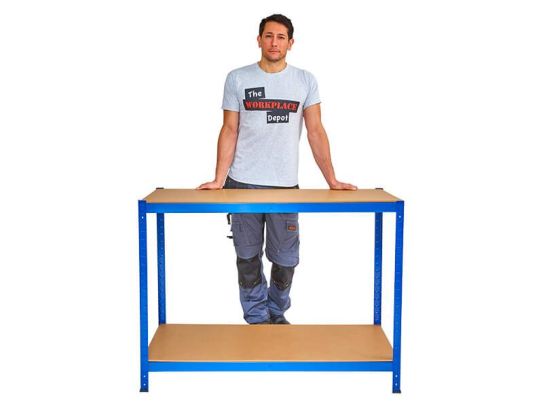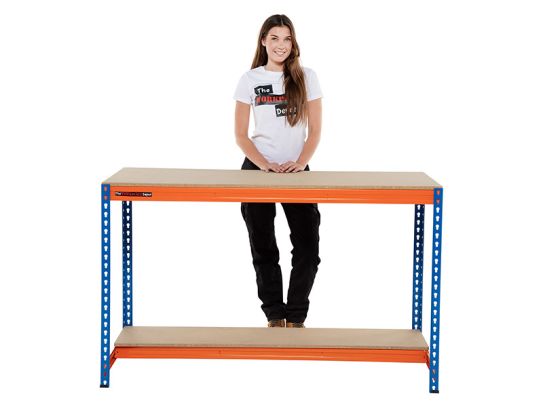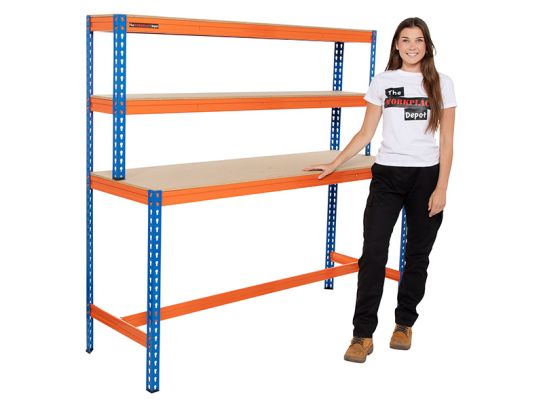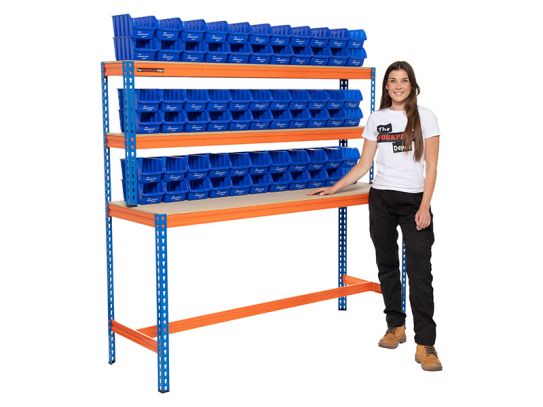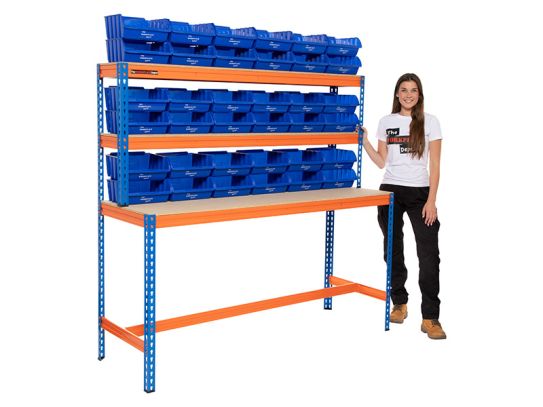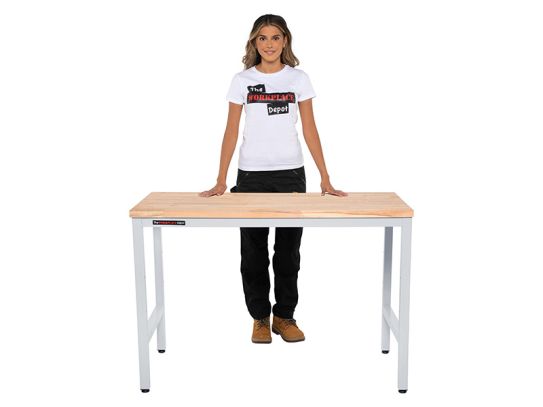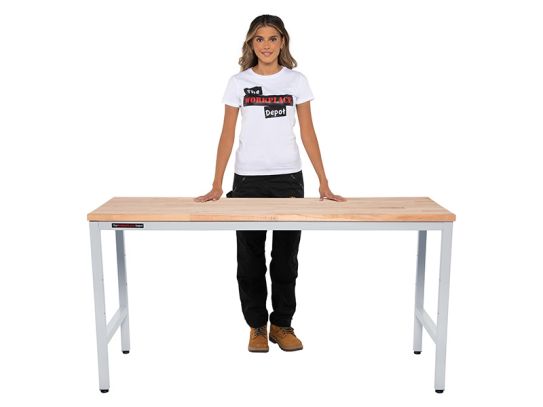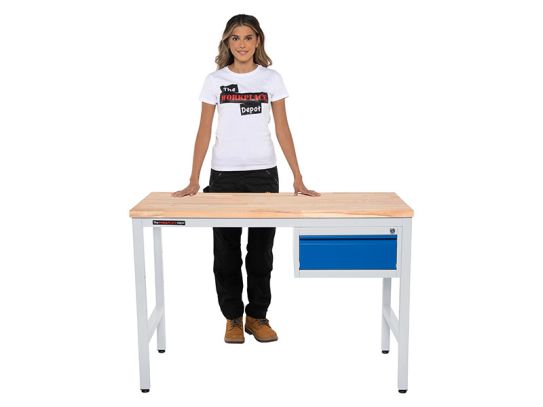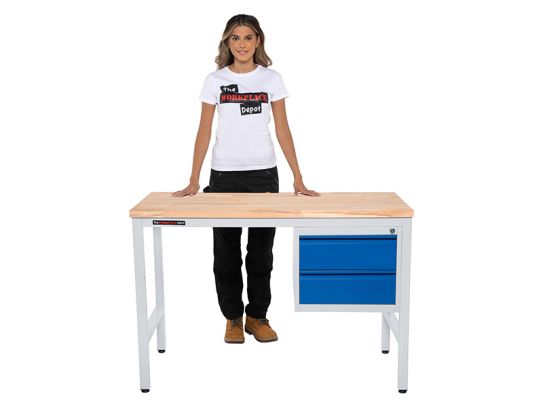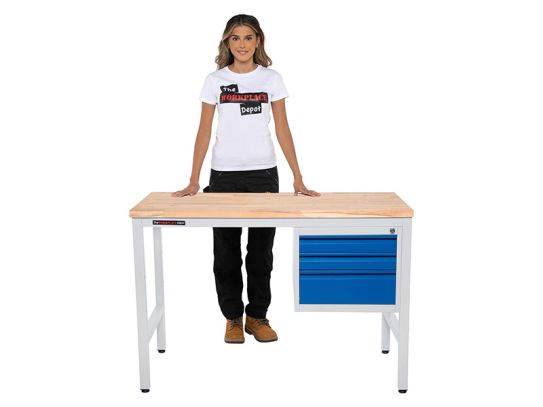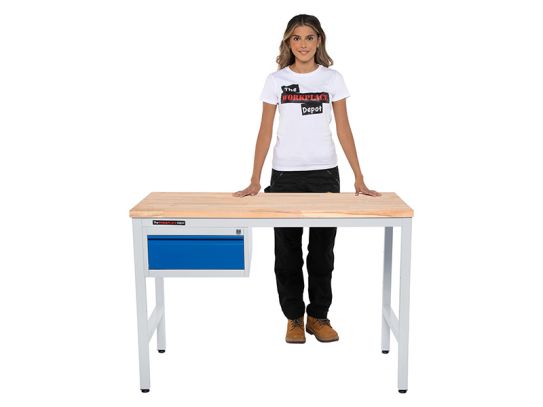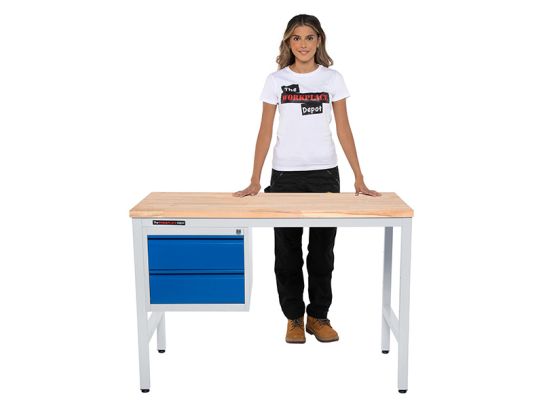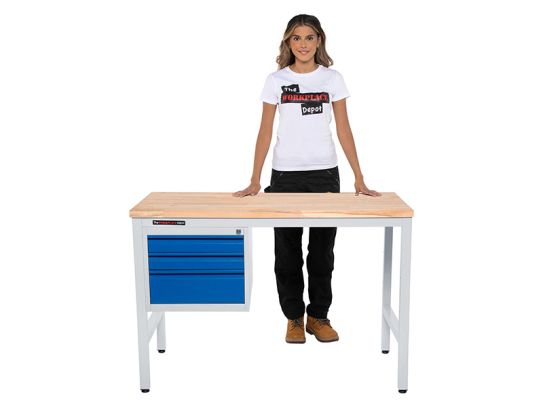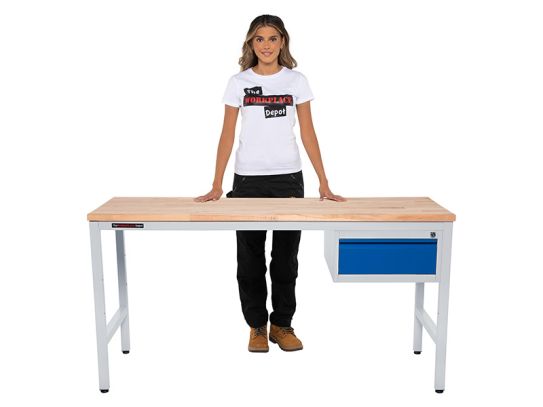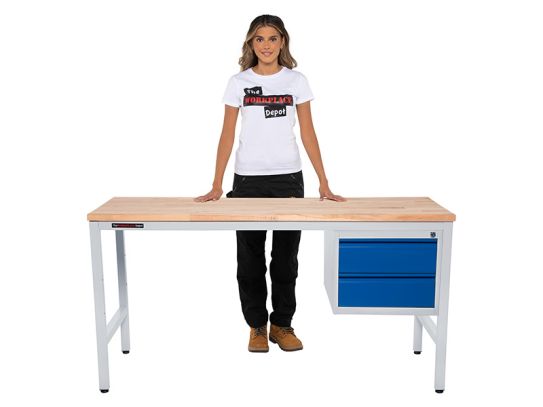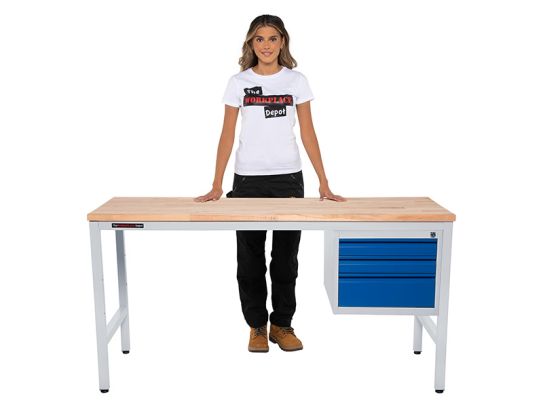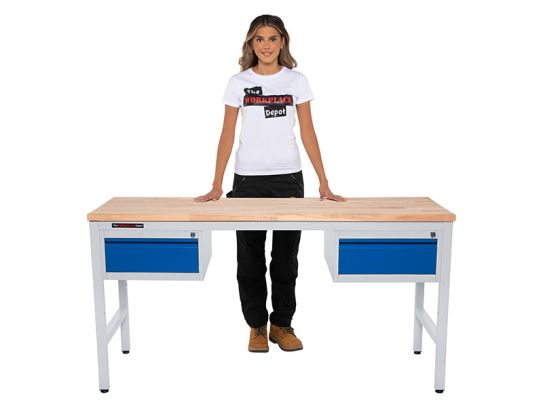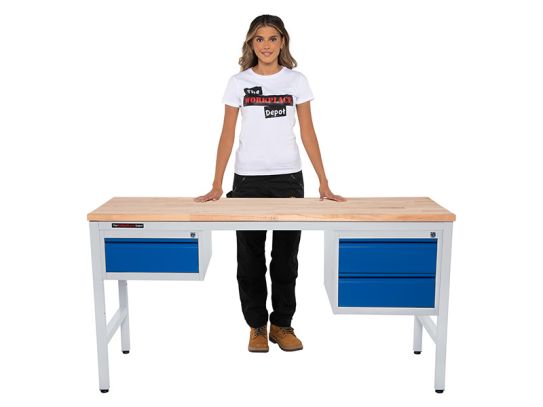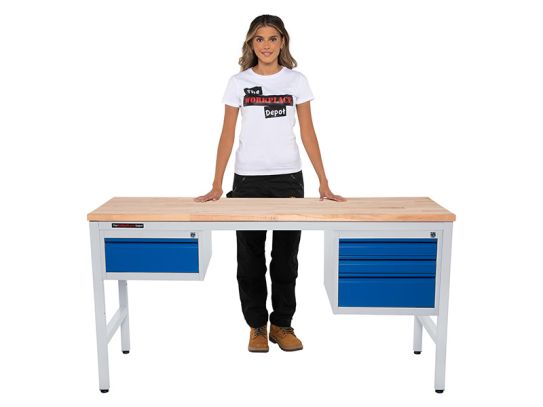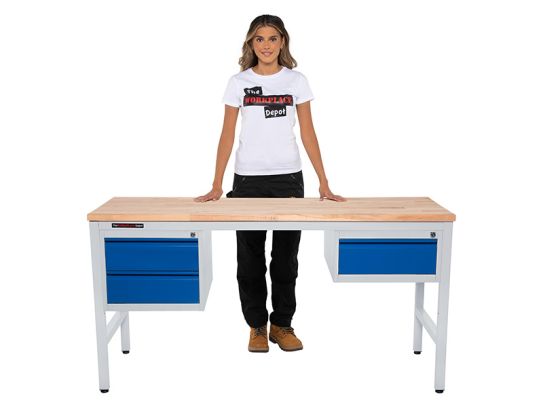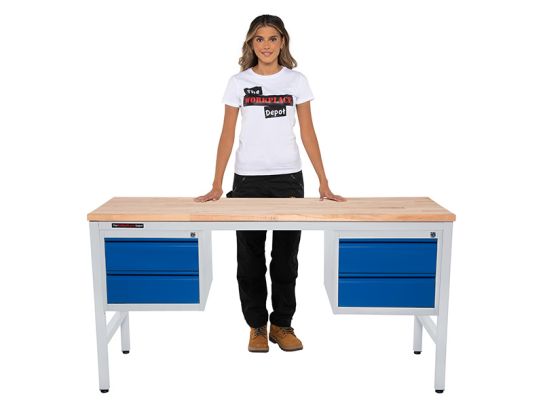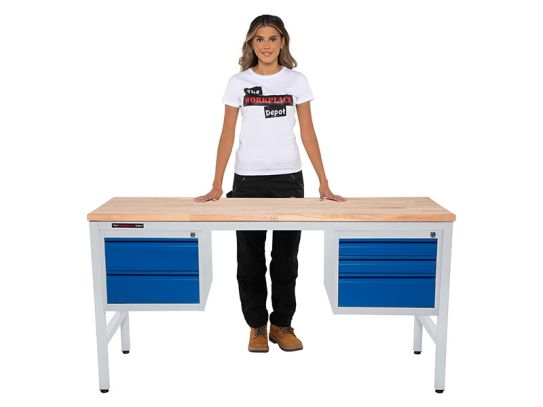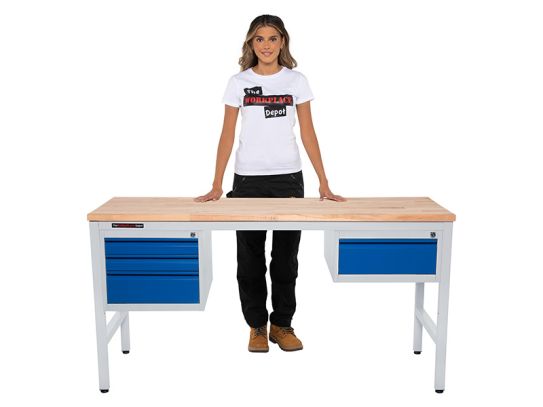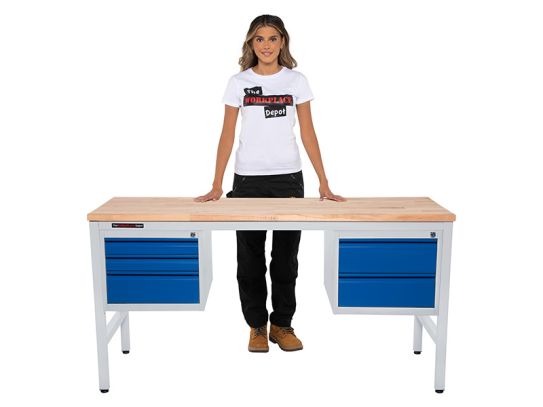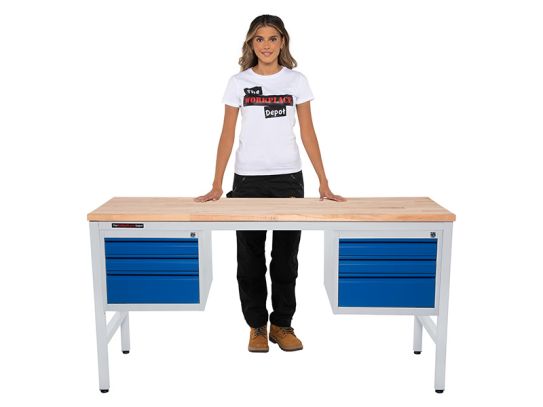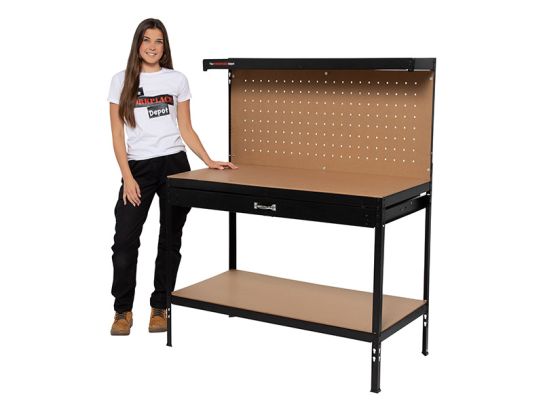Workbenches and Workstations
Maximise your productivity and efficiency with our versatile and adjustable workbenches Made from heavy-duty materials and constructed with precision, these workbenches are designed to withstand even the most demanding projects.
The Perfect Addition to Any Workshop or Garage
Are you ready to take your DIY projects to the next level? Introducing our workbenches - the perfect tool for any workshop or garage. With their sturdy and durable construction, these workbenches provide a stable and secure surface for working on a variety of tasks, from woodworking to metalworking to tinkering with small mechanical parts. Plus, their versatile designs mean you can choose a bench to fit your specific needs and preferences. Whether you're a professional tradesperson or a hobbyist, our workbenches are the ultimate tool for getting the job done right.
What Are Workbenches?
A workbench is a sturdy table or platform that is used by craftsmen or workers to perform tasks such as woodworking, metalworking, or electronics assembly. Workbenches are typically made of wood or metal and are designed to provide a stable and sturdy surface for working on. They often have features such as adjustable heights, built-in storage, and vises for holding materials in place. Workbenches are used in a wide variety of settings, from industrial workshops to home garages and sheds.
What Are Some Common Uses for Workbenches?
Workbenches are commonly used in a variety of settings, including workshops, garages, and sheds. Some common uses for workbenches include:
- Woodworking: Workbenches are an essential tool for woodworkers, providing a stable and sturdy surface for cutting, shaping, and finishing wood. Many woodworking workbenches are equipped with vises and clamps for holding materials in place, as well as built-in storage for tools and other supplies.
- Metalworking: Workbenches are also used by metalworkers for tasks such as welding, cutting, and grinding metal. Metalworking workbenches are often sturdier and more heavy-duty than woodworking workbenches, and may have features such as magnetised surfaces or built-in fume extractors.
- Electronics assembly: Workbenches are also used in the electronics industry for tasks such as soldering, circuit building, and component testing. Electronics workbenches are often equipped with features such as anti-static surfaces, adjustable lighting, and built-in test equipment.
- Home repair and DIY projects: Many people also use workbenches in their home garages or sheds for tasks such as painting, automotive repair, and general DIY projects. Home workbenches are often more compact and portable than industrial workbenches, and may have features such as fold-down tops and built-in tool storage.
What Are the Different Types of Workbench?
There are many different types of workbench, designed for different uses and settings. Some common types of workbench include:
- Woodworking workbench: A woodworking workbench is a sturdy and functional workbench designed specifically for woodworking tasks. It typically has a solid wood top, a sturdy base, and features such as built-in vises and clamps. Some woodworking workbenches also have built-in drawers or cabinets for storing tools and supplies.
- Metalworking workbench: A metalworking workbench is similar to a woodworking workbench, but is typically sturdier and more heavy-duty. It is designed for tasks such as welding, cutting, and grinding metal, and may have features such as magnetised surfaces or built-in fume extractors.
- Electronics workbench: An electronics workbench is a specialised workbench designed for tasks such as soldering, circuit building, and component testing. It often has features such as an anti-static surface, adjustable lighting, and built-in test equipment.
- Home workbench: A home workbench is a compact and portable workbench that is designed for use in home garages and sheds. It is often made of lightweight materials and may have features such as fold-down tops and built-in tool storage.
- Adjustable workbench: An adjustable workbench is a workbench that can be adjusted to different heights and angles to suit the needs of the user. This type of workbench is often used in industrial settings where multiple workers may be using the same workbench at different times.
What Are the Key Features to Consider When Choosing Workbenches?
When choosing a workbench, there are several key features to consider in order to ensure that you get the right one for your needs. These include:
- Size and dimensions: Make sure to choose a workbench that is the right size for your workspace, with enough room for all of your tools and materials.
- Weight capacity: Consider the weight capacity of the workbench, as well as the types of projects you will be working on and the tools you will be using. This will help to ensure that the workbench is sturdy and stable enough to support your needs.
- Material and construction: Look for workbenches that are made from high-quality materials, such as steel or heavy-duty wood, and that are constructed with sturdy and reliable joints and connections. This will help to ensure that the workbench is durable and long-lasting.
- Work surface: The work surface should be smooth, level, and large enough to accommodate your projects. It should also be resistant to stains, scratches, and other damage.
- Storage: Look for workbenches with built-in storage options, such as shelves, drawers, and pegboards, to help keep your workspace organised and clutter-free.
- Adjustability: If possible, choose a workbench that is adjustable, so that you can easily change the height and angle of the work surface to suit your needs.
- Price: Consider your budget and choose a workbench that offers good value for money. Look for high-quality materials and construction, as well as additional features and accessories, to ensure that you get the best possible workbench for your money.
How Do I Maintain My Work Bench?
Here are a few tips for maintaining your workbench:
- Keep it clean: Wipe down your workbench regularly to remove any debris or tools that may have been left on its surface. This will help prevent any accidents or injuries, and it will also keep your workspace organised and efficient.
- Protect the surface: If your workbench is made of wood, use a protective coating such as varnish or wax to help prevent scratches and dents. This will also make it easier to clean and maintain the surface of your workbench.
- Store tools properly: Make sure to put your tools away when you are finished using them. This will help prevent accidents and injuries, and it will also keep your workbench organised and efficient. Consider using a tool chest or tool cabinet to store your tools in an organised manner.
- Be careful: Always use caution when working on your workbench. Use clamps to hold materials in place, and wear protective gear such as gloves and safety glasses to prevent accidents and injuries.
- Keep it level: Over time, your workbench may become uneven or wobbly. To fix this, adjust the levellers on the feet of your workbench, or use shims to level out the surface. This will help ensure that your workbench remains stable and secure while you are working.
What Safety Considerations Should Be Taken into Account When Using a Workbench?
When using a workbench, it is important to take certain safety precautions in order to prevent accidents and injuries. Some key safety considerations to keep in mind include:
- Always read and follow the manufacturer's instructions for use and safety when setting up and using your workbench.
- Make sure that your workbench is stable and level, and that all of the legs and supports are securely in place.
- Use appropriate personal protective equipment (PPE), such as safety glasses, gloves, and earplugs, when working with tools and materials on your workbench.
- Keep your workspace clean and organised, and make sure that all tools and materials are stored properly when not in use.
- Never leave tools or other objects on the workbench that could potentially fall and cause injury.
- Avoid overloading the workbench, and make sure that it is capable of supporting the weight of your projects and materials.
- Take regular breaks to avoid fatigue, and be sure to stretch and move around periodically to avoid straining your muscles.
By following these safety tips, you can help to ensure that your workbench is a safe and effective workspace for all of your projects.
